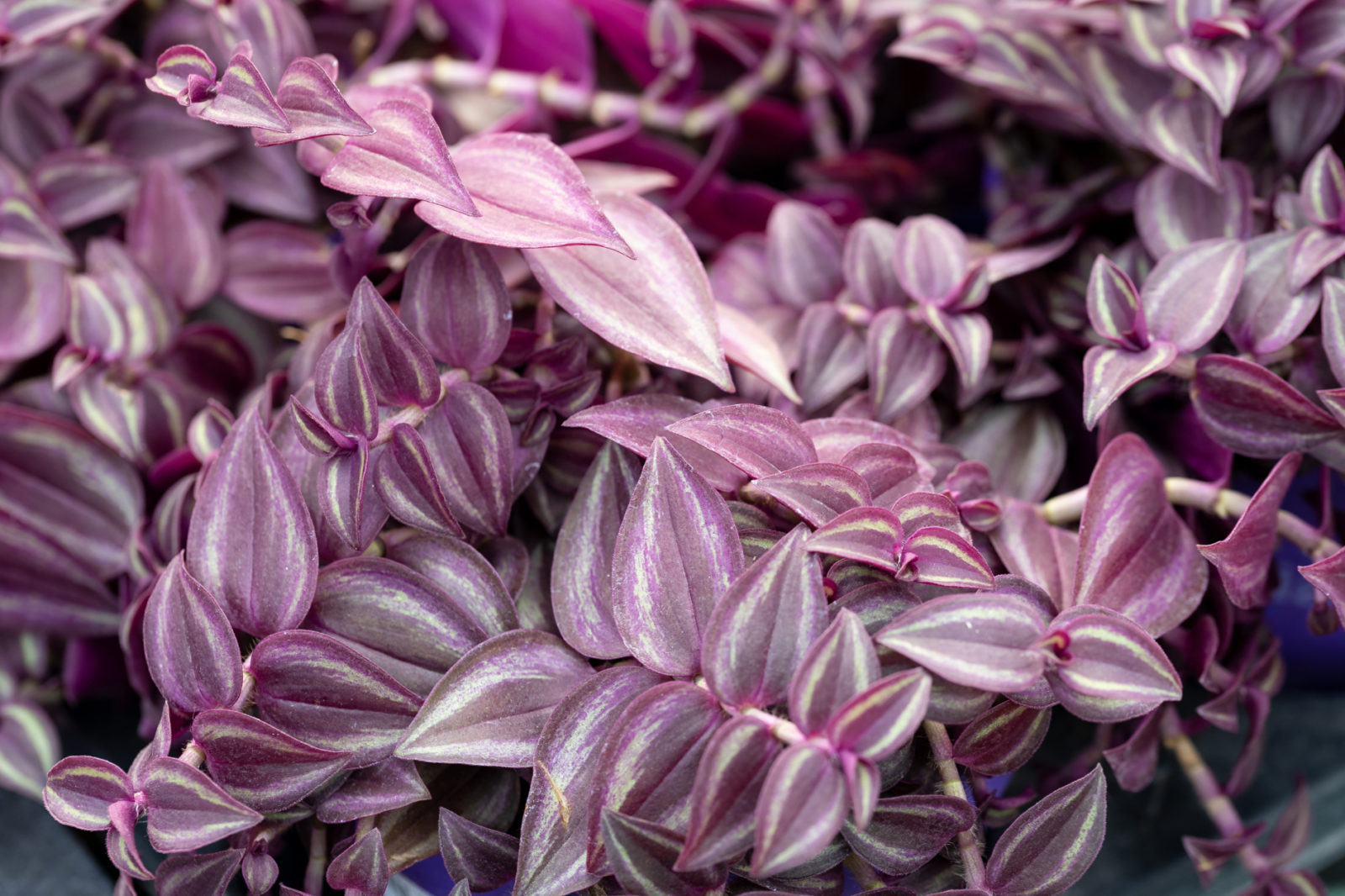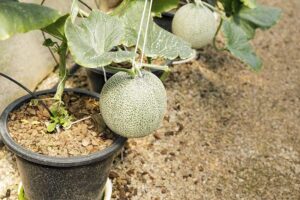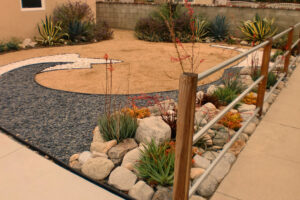
Vine plants with purple and green leaves add a captivating touch of color and texture to indoor and outdoor spaces alike. With their striking foliage and graceful trailing vines, these plants have gained popularity among gardeners and plant enthusiasts for their ornamental value and versatile uses. In this article, we delve into the botanical characteristics, popular varieties, design appeal, and care requirements of vine plants with purple and green leaves, highlighting their unique beauty and practical benefits in garden landscapes.
I. Introduction
A. Definition of Vine Plants with Purple and Green Leaves
Vine plants with purple and green leaves are climbing or trailing plants characterized by their vibrant foliage and long, flexible stems that twine or climb on supporting structures. These plants are prized for their ornamental value and ability to add vertical interest and lush greenery to indoor and outdoor spaces.
B. Growing Popularity and Appeal
In recent years, vine plants with purple and green leaves have surged in popularity among gardeners and interior decorators for their aesthetic appeal and versatility in landscape design. Their striking foliage and trailing vines create visual interest and focal points in garden beds, hanging baskets, and vertical gardens, making them sought-after additions to both indoor and outdoor environments.
C. Significance of Purple and Green Foliage
The combination of purple and green foliage in vine plants adds depth, dimension, and drama to garden landscapes, creating a dynamic contrast that catches the eye and enhances the overall aesthetic appeal. The rich hues of purple foliage symbolize royalty, luxury, and creativity, while the vibrant green tones evoke feelings of vitality, growth, and renewal, making these plants prized ornamental specimens.
II. Botanical Characteristics
A. Genetic Factors
1. Anthocyanin Pigments
The purple coloration in the leaves of vine plants is attributed to the presence of anthocyanin pigments, which are water-soluble flavonoid compounds responsible for the vibrant hues seen in various plant tissues. These pigments accumulate in specialized cells called vacuoles, imparting shades of purple, red, or blue to the foliage.
2. Chlorophyll Content
Despite their purple pigmentation, the leaves of vine plants still contain chlorophyll, the green pigment essential for photosynthesis. The combination of anthocyanins and chlorophyll results in the unique color patterns observed in variegated leaves, where shades of purple and green interplay harmoniously.
B. Leaf Morphology
1. Color Patterns
Vine plants with purple and green leaves exhibit a diverse array of color patterns, ranging from subtle variegation to bold splashes of purple against a green background. These patterns may be evenly distributed across the leaf surface or concentrated in specific areas, adding visual interest and complexity.
2. Vine Structure
In addition to their colorful foliage, vine plants possess long, flexible stems that twine, climb, or trail along supporting structures such as trellises, arbors, or fences. The vine structure allows these plants to adapt to various growing conditions and environments, making them versatile additions to garden landscapes.
C. Environmental Adaptability
Vine plants with purple and green leaves are adaptable to a wide range of environmental conditions, including varying light levels, temperatures, and humidity levels. They thrive in bright, indirect light and moderate temperatures, preferring well-drained soil and regular moisture to support healthy growth and foliage coloration.
III. Popular Varieties
A. Purple Heart (Tradescantia pallida)
1. Description and Features
Purple heart is a trailing perennial vine with elongated, lance-shaped leaves that are deep purple on the upper surface and bright green on the underside. It produces small, pale pink flowers in summer that contrast beautifully with the purple foliage, creating a striking display.
2. Growing Conditions
Purple heart thrives in full sun to partial shade and prefers well-drained soil with regular moisture. It is drought-tolerant once established and can be grown as a ground cover, container plant, or hanging basket, where its trailing habit adds vertical interest and visual appeal.
B. Wandering Jew (Tradescantia zebrina)
1. Description and Features
Wandering Jew is a popular trailing vine with elongated, lance-shaped leaves that are striped with shades of purple, green, and silver. It produces small, white or pink flowers in summer that are surrounded by colorful bracts, adding to its ornamental value.
2. Growing Conditions
Wandering Jew thrives in bright, indirect light and prefers well-drained soil with regular moisture. It is tolerant of low humidity and can be grown indoors as a houseplant or outdoors in hanging baskets or containers, where its trailing vines create cascading displays of color.
C. Purple Passion Vine (Gynura aurantiaca)
1. Description and Features
Purple passion vine is a tropical perennial vine with velvety, purple-green leaves that have serrated edges and a slightly fuzzy texture. It produces small, orange-yellow flowers in clusters that contrast beautifully with the purple foliage, adding to its ornamental appeal.
2. Growing Conditions
Purple passion vine thrives in bright, indirect light and prefers well-drained soil with regular moisture. It is sensitive to cold temperatures and should be protected from frost, making it suitable for indoor cultivation or outdoor cultivation in frost-free climates.
IV. Design and Aesthetic Appeal
A. Versatility in Landscape Design
1. Vertical Gardens
Vine plants with purple and green leaves are ideal for vertical gardens, where they can climb or trail along trellises, arbors, or walls to create living tapestries of foliage and flowers. Their trailing vines add depth and dimension to vertical spaces, softening hard surfaces and providing visual interest.
2. Hanging Baskets
These plants are well-suited for hanging baskets, where their trailing vines spill over edges and cascade down sides, creating cascading displays of color and texture. They can be combined with other trailing or upright plants to create lush, multi-dimensional arrangements that brighten up outdoor patios, balconies, or porches.
B. Complementary Colors and Texture
1. Pairing with Other Plants
Vine plants with purple and green leaves can be paired with other plants with contrasting foliage colors, textures, and growth habits to create dynamic and visually appealing combinations. They complement plants with yellow, orange, or red flowers, as well as plants with silver, blue, or variegated foliage, creating striking contrasts and harmonious compositions.
2. Foliage Contrast
The combination of purple and green foliage in vine plants creates a striking contrast that adds drama and visual impact to garden landscapes. The rich, jewel-toned hues of purple foliage stand out against the lush green backdrop, drawing attention and creating focal points amidst the foliage.
C. Indoor Decorative Accent
Vine plants with purple and green leaves are popular choices for indoor decoration, where they can be grown as houseplants or displayed in hanging baskets or containers. Their trailing vines add vertical interest and dimension to indoor spaces, softening hard surfaces and bringing a touch of nature indoors.
V. Care and Maintenance
A. Light and Temperature Requirements
1. Optimal Light Conditions
Provide vine plants with purple and green leaves with bright, indirect light for optimal growth and foliage coloration. Avoid direct sunlight, as it can cause leaf scorching or fading of purple pigments, particularly in sensitive varieties.
2. Temperature Sensitivity
These plants prefer moderate temperatures between 65°F to 75°F (18°C to 24°C) and are sensitive to cold drafts or temperature fluctuations. Protect them from cold drafts near windows or doors, and maintain consistent temperatures to avoid stress or damage to foliage.
B. Watering and Soil Conditions
1. Moisture Needs
Water vine plants with purple and green leaves regularly to keep the soil evenly moist but not waterlogged. Allow the top inch of soil to dry out between waterings, and avoid overwatering, as it can lead to root rot or fungal diseases.
2. Soil Composition
Use well-drained potting soil or a soil mix formulated for container plants, with good aeration and drainage properties. Avoid heavy or compacted soils that retain water, as they can suffocate roots and lead to moisture-related issues.
C. Pruning and Training Techniques
1. Pruning
Prune vine plants with purple and green leaves regularly to maintain their desired size and shape and promote healthy growth. Remove dead, damaged, or yellowing leaves, as well as leggy or overgrown stems, to encourage branching and denser foliage.
2. Training
Train the vines of these plants along trellises, stakes, or other supporting structures to encourage upward growth and prevent tangling or overcrowding. Use soft ties or twine to secure vines to supports gently, avoiding damage to delicate stems or foliage.
In conclusion, vine plants with purple and green leaves are prized for their ornamental value, versatile uses, and ease of cultivation in garden landscapes. With their striking foliage, graceful trailing vines, and vibrant colors, these plants add visual interest and focal points to indoor and outdoor spaces alike. By understanding their botanical characteristics, selecting the right varieties, and providing proper care and maintenance, gardeners can enjoy the beauty and benefits of these captivating plants year-round.






